Armor for the "poor samurai"
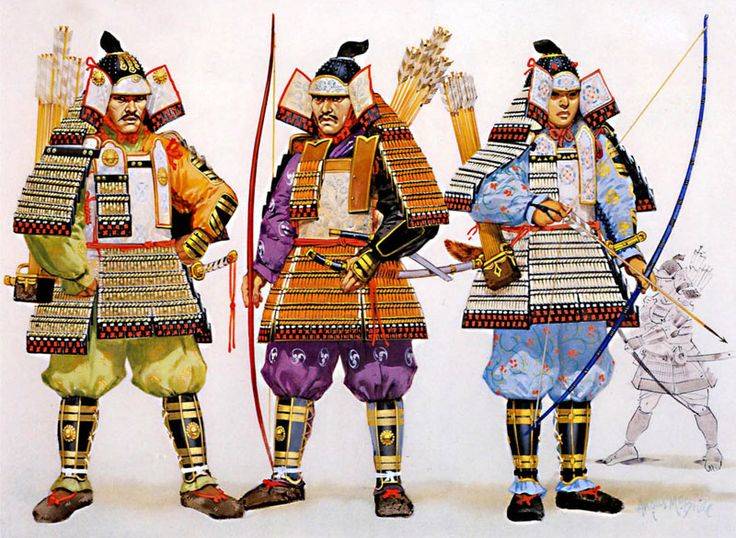
Kvokhchut, kvokhchut: they must have decided
What a hawk napping.
Basho
Armor and weapon samurai of japan. In Japan in the Middle Ages, natural dyes were used to dye silk cords, which were highly resistant. And, of course, the most persistent colors are therefore used more often than others. In Japanese armor, lacing was very often used red - aka, orange - chi ("fiery"), raspberry - kurenai, black - kuro, green - midori, blue - con, yellow - ki, brown - cha ("tea") , white is shiro and violet is murasaki. The blue color that indigo dye gave was popular, since this dye protected silk from fading, but madder and soy, respectively red and violet colors, destroyed it, so that red-violet lacing had to be restored more often than others. Of course, there were always those who basically wore just such a lacing to show everything that "they can afford it." Well, the poorest wore black cords. They were stained with either soot or ink based on "ink nuts". Lovers of everything elegant used white oshoshige leather straps with red cherry blossoms embossed on them.
Beautiful armor full of insects
Needless to say, the Japanese armor was very beautiful and bright, but any beauty required considerable sacrifices, and the Japanese also had to pay a considerable price for their laced armor. For example, the tight lacing that decorated them on the outside only delayed the spear point - instead of letting it slip, it also got wet in the rain and became much heavier. In addition, to dry the armor in the field was worth a lot of work. However, their weight not only burdened the warrior. In the cold, wet cords froze, and removed armor became impossible to put on. Moreover, they broke at the same time! In addition, no washing could completely and completely clean the lacing from dirt, which inevitably got into it. Since there was no one to take care of her during the campaigns, the lacing began to smell foul, insects - ants and lice were planted in it, which far from best reflected on the health of the samurai and reduced the combat effectiveness of the whole army! So it is hardly a great exaggeration to say that in ancient times, in some cases, all these beautiful laced armor were a real collection of all kinds of nasty insects. Yes, of course, they were intertwined, the cords were washed, and the soaked armor was trying to dry by the fire ... But it is also obvious that all this fuss took a lot of time and energy from the soldiers!
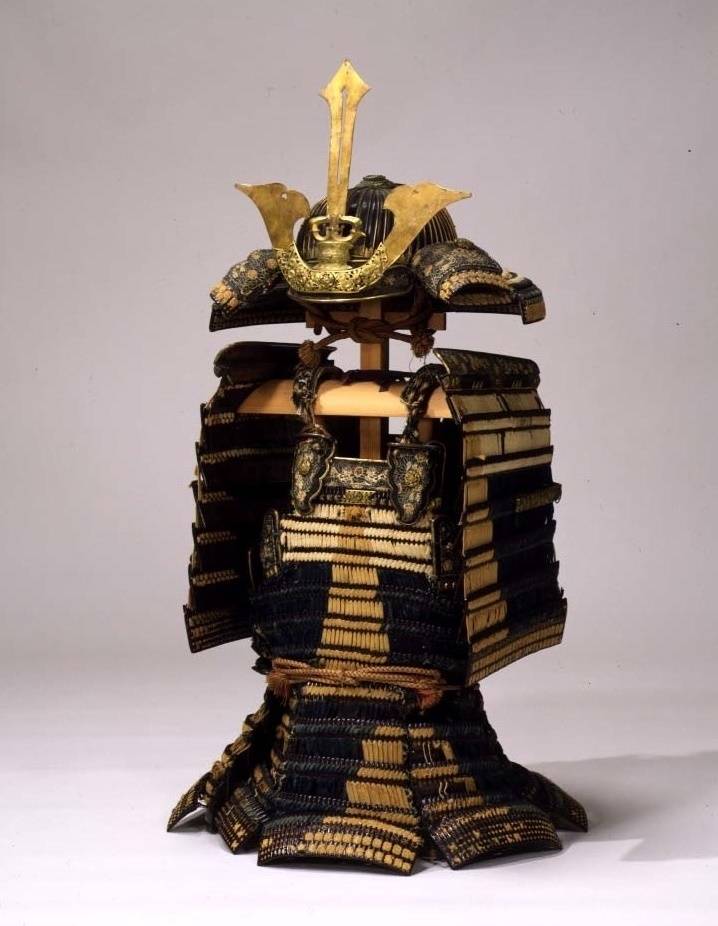
Do-Maru Armor
Therefore, no matter how good the armor of o-yoy was, no matter how many samurai dreamed of it, not everyone had it. Therefore, those who were poorer were dressed in do-maru armor, which means “around the body”, which appeared at the same time as o-yora armor, and maybe even earlier. They also consisted of rows of plates laced together, but were only arranged in such a way that they did not need a separate vaidate plate. In the pre-maru it was possible to “wrap up” by wrapping it around the body, tying the straps on the right side. That is, to put on the maru was much easier and faster than o-yoyu armor.
They usually didn’t have huge o-sode shoulders, and instead of two breast plates of different sizes, they began to use geyo plates in the form of a wood sheet, which were attached to the gates. The number of kusazuri increased to 7–8 sections, so that a servant dressed up in a home would be more comfortable walking or running next to his master’s horse. It became obvious that the o-yoroy armor was not suitable for the infantrymen, and as they became more and more, the popularity of armor until the Maru was constantly growing. And over time, even many noble samurai clothed them, although they wore them with o-sode shoulder pads to at least emphasize their high rank, but the armor itself tried to beautify better.
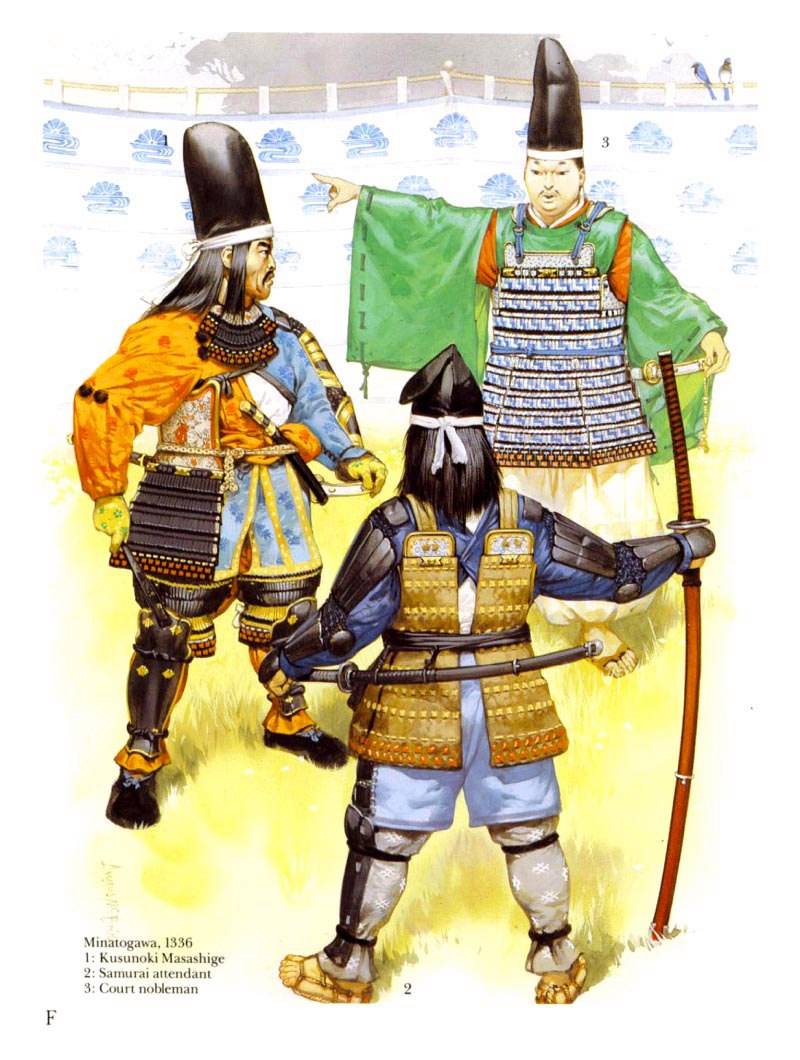
Haramaki-do: “armor that wound around the abdomen”
Another armor appeared in the XIV century. It was called haramaki-do (or just haramaki), which translates as "wrapping around the abdomen." It was also plate armor, but they were tied on the back. The rows of records did not meet there, so there was nowhere to place the agemaki node. But there is no knot - and o-sode cannot be fixed. But the solution was still found.
Just in this place an additional se-ita plate was placed - long and narrow and with one kusazuri below. However, it was believed that since the samurai could not turn his back to the enemy, he did not need this plate either. No wonder its name translates as “coward plate”. But on the other hand, she managed to attach an agemaki bow, which means she was wearing o-sode with this armor. So a rather strange hybrid of yoroy-haramaki appeared with shoulder pads from old and expensive o-yoroy armor, although the armor itself was much lighter, more comfortable and ... cheaper!
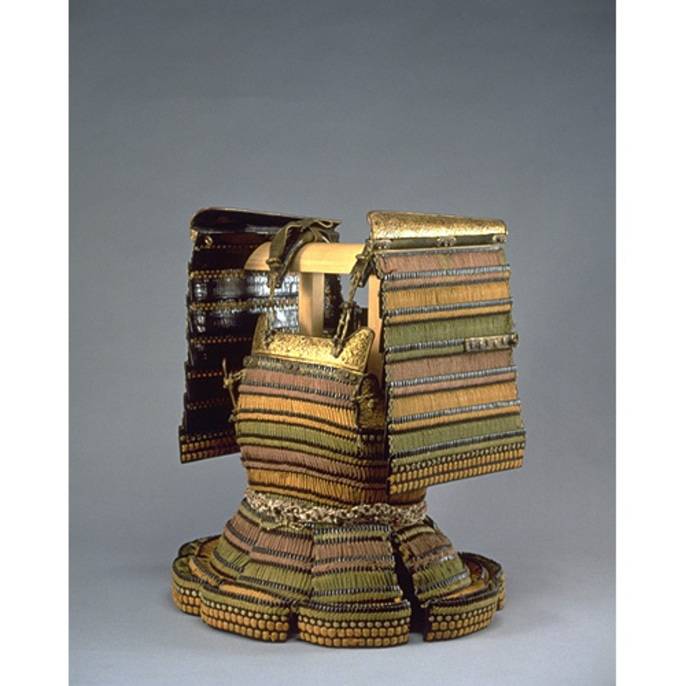
Haraate Armor: Nowhere Easier!
There were more and more infantrymen in the samurai army, and it was very difficult to equip them all with armor. Japanese gunsmiths found a way out in haraate armor (“belly protection”), similar to an apron with an apron. They had six rows of plates connected by the smallest number of cords. This “apron” was held with the help of shoulder straps with buttons and ties that crossed on the back. Kusazuri usually had only three, or even one, that covered the warrior's very lower abdomen. Instead of a helmet with haraate, they wore happuri - a half mask of black lacquered metal on the forehead, cheeks and whiskey, and the simplest kote bracelets made of leather. But the convenience of the haraate was also noticed by the Japanese military elite, and its representatives began to wear this armor with their everyday clothes (or rather, it will be said, underneath) in order to be saved in case of an unexpected attack.
Restoration of old armor in the middle of the XIX century was very expensive, which means that making them was hardly cheaper. So, the manufacture of Do-Maru armor in 1856 cost 215 gold ryos, seven years later they gave 300 ryos for a copy of the o-ryu, and they took 1534 ryos for the restoration of the helmet of the famous craftsman Myochin Nobui in 1865 in 19! Then ryo contained about 3 grams of gold. So, 300 ryo in today's terms would equal the value of almost a whole kilogram of gold!
Hand and foot protection
Although it is clear that armor should protect not only the torso and head, but also other parts of the body, the first bracers, moreover, for the left hand holding the bow, Japanese armor began to appear on the Japanese armor only at the end of the XII century. On the right was only the magnificent sleeve of the under-armor robes of the hitatar, and this was considered quite enough. The bracelet on the left hand also looked unusual - the kote, which looked like a baggy sleeve, which should be worn separately. It was trimmed with plates, and to protect the back of the hand had a profiled tecco plate, which was attached to the back of the palm with two loops for the middle and thumb. Thanks to these loops, neither this plate, nor the sleeve itself could be “lost". Here are just the left sleeve of the hitatar, as magnificent as the right one, it could not fit inside the rather narrow kote, so it was lowered from the hand and carried under armor, tucking it in the belt. That is, its basis was fabric, which is why early kote samples were not preserved. From the XNUMXth century kote on both hands came into fashion, and the fourteenth century. chain mail began to be sewn onto the fabric, and now they are preserved to our time and are exhibited in Japanese and foreign museums.
By the way, unlike other countries, in Japan chain mail as such began to be used very late, only during the Edo period. Before that, it was usually sewn onto fabric or leather, and, of course, it was also covered with black varnish, even when the color of all other details of the armor was different. The design of Japanese chain mail was very original and not similar to the European one. For example, one round ring was connected to four or six rings, that is, four- and hexagonal weaving were used. Such chain mail was tightly laid on the fabric, and it was convenient to connect its rings with metal plates. But the main difference was that the Japanese connected the rings end-to-end, or they made each ring from two to three turns of wire and, when assembling, wound the rings one after another, as is done with modern keyring key rings.
Namban-hussars or “chain mail of the southern barbarians” came to Japan only in the XNUMXth century, and although the Japanese liked them, they continued to reduce their chain mail rings, as before,! Kote made entirely of chain mail was a rarity: the Japanese still more trusted plate armor. Until the XNUMXth century, the legs of the riders did not seriously defend themselves. Samurai wore ordinary sandals and wore tight coils on their calves. But then Kutsu shoes, trimmed with bear fur, and suneate leggings appeared.
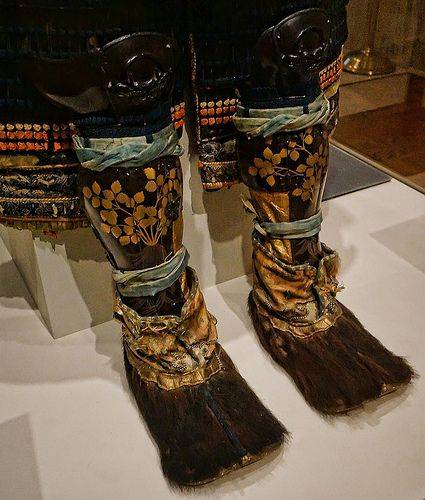
Usually they were made of three metal or leather plates, connected with loops. The plates were varnished and decorated with gilded ornaments. Kahan cloth was worn under the suneate so that they would not rub their legs. They were attached to the shins with the help of silk cords that were tied behind.
Later, already in the XIV century, plate-like knee-pads of the same-oge and tate-oge (with large knee pads) were attached to the greaves, and fur shoes now became the privilege of only the most distinguished samurai. Since, during the jump of the kusazuri plate, the haramaki-do armor often left the hips open, they were first tried to protect them with metal plates sewn directly onto the pants. But it turned out that it was not very convenient, therefore, special haidate legguards were invented, which were something like a forked cloth apron, sheathed on the outside with metal or leather plates.
Haidate often tied or fastened with buttons under the knees, which made them look like ... armored pants. True, walking in them and riding was not very convenient, so they were not widely used. There were leggings entirely of chain mail sewn onto fabric (kusari-suneate). Their noble warriors wore under their trousers, but since they could not protect against strong blows, they did not receive distribution.
To be continued ...
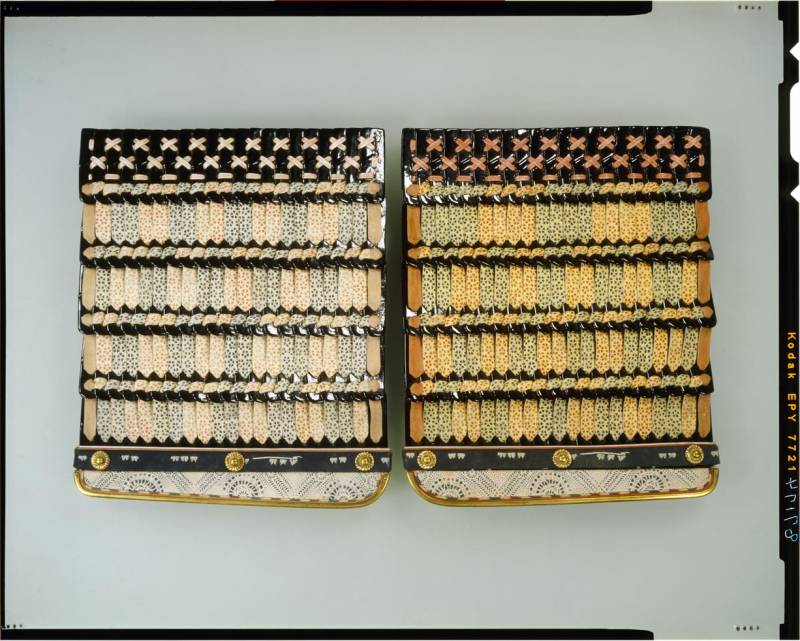
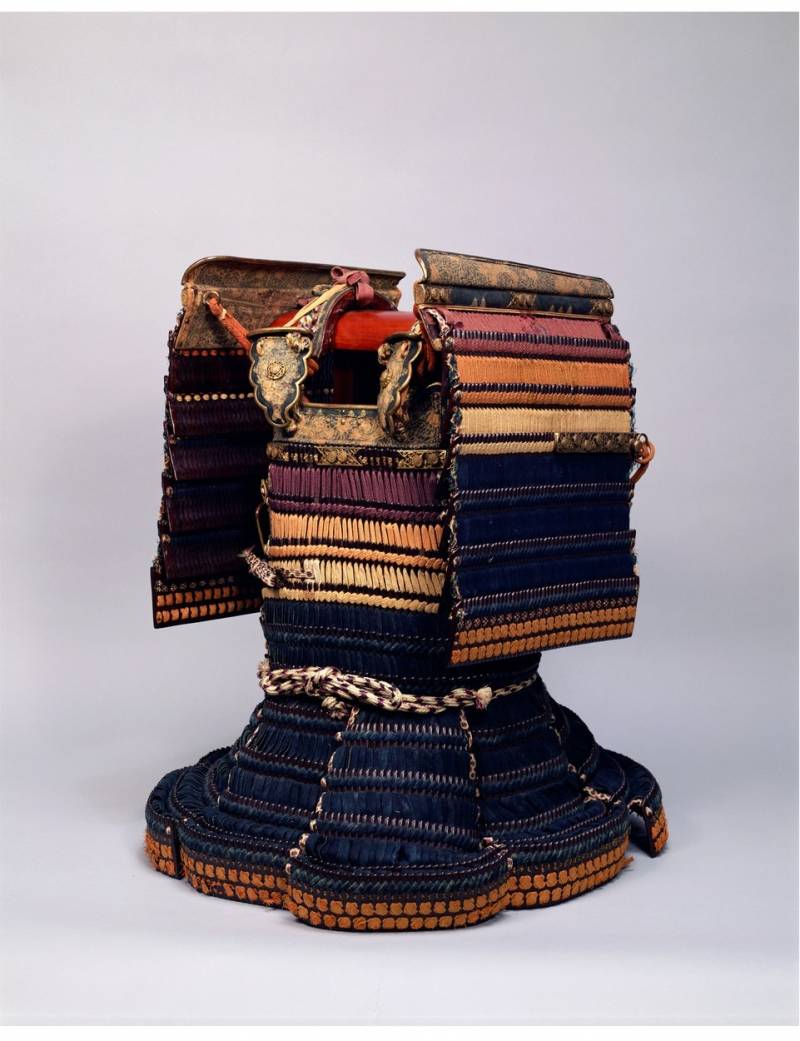
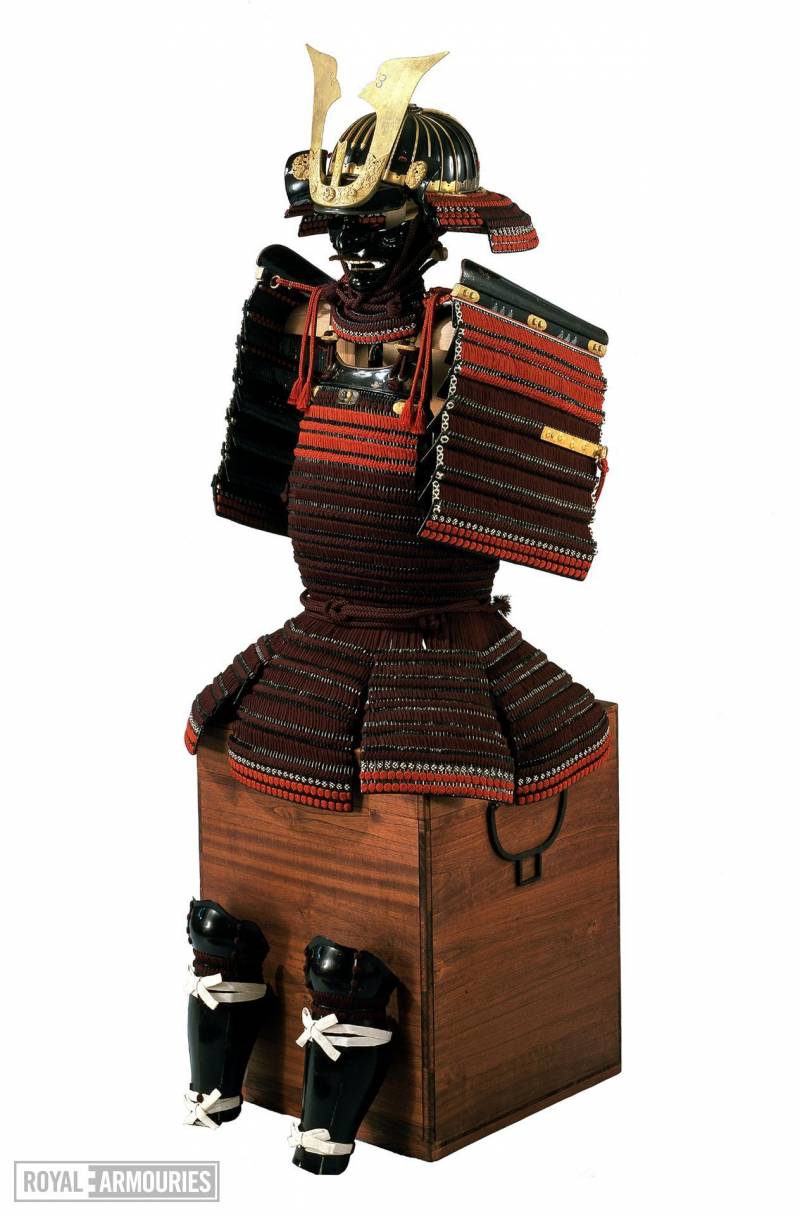
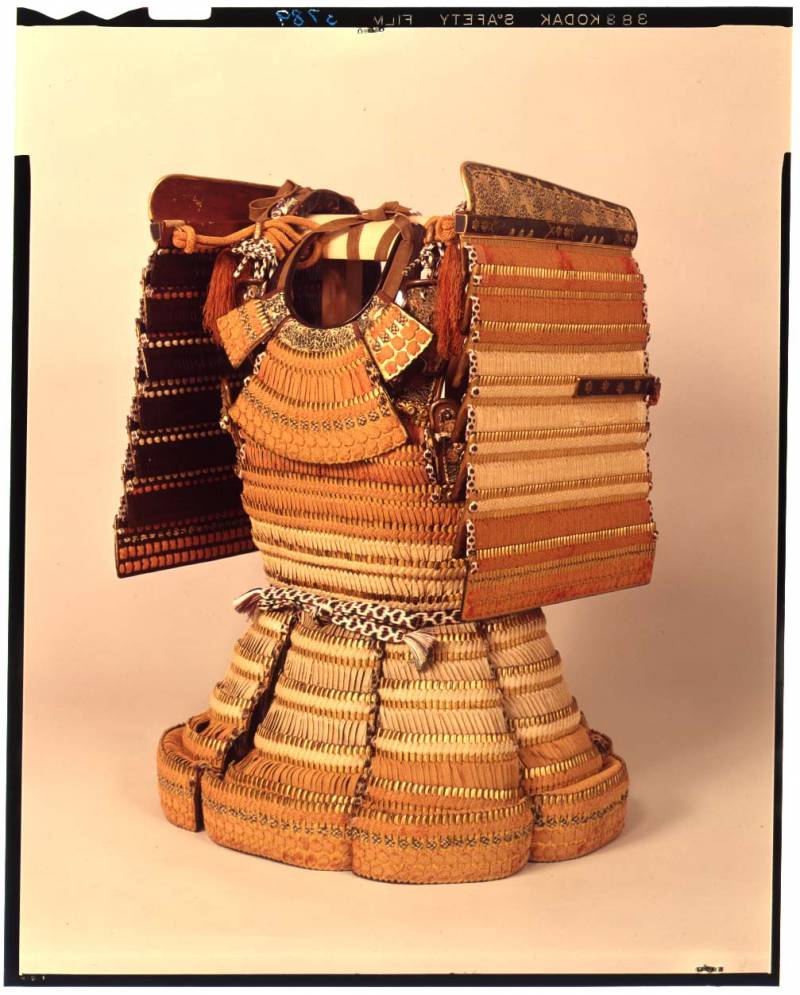
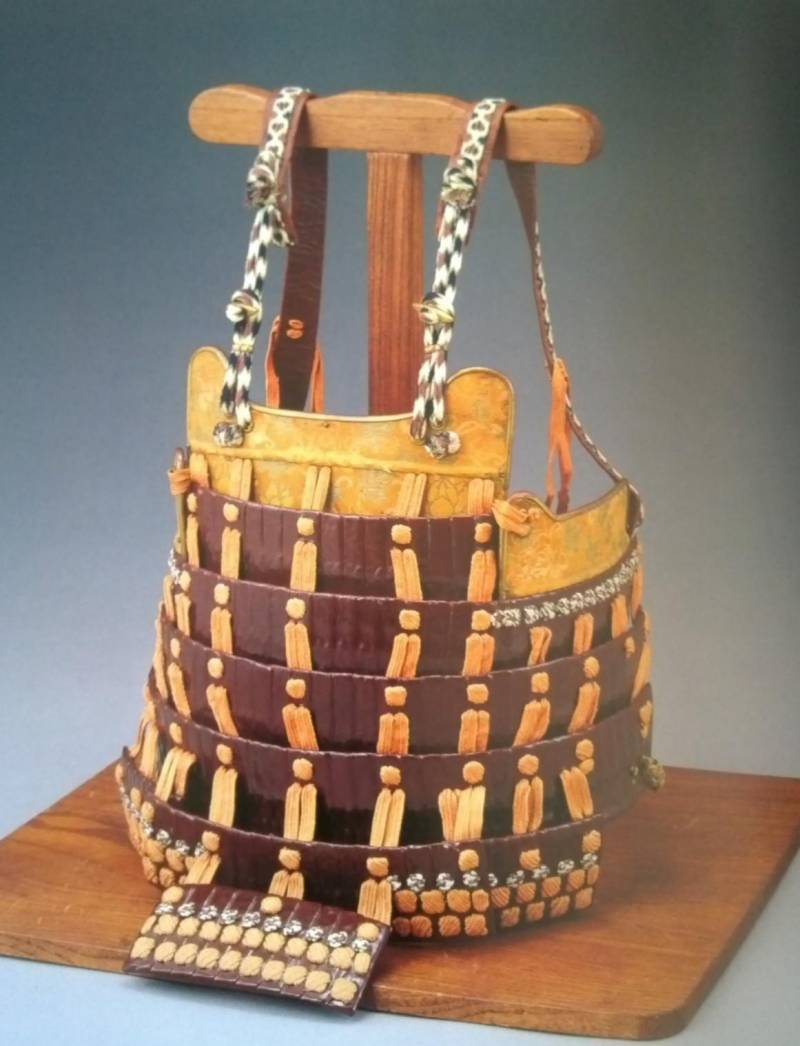
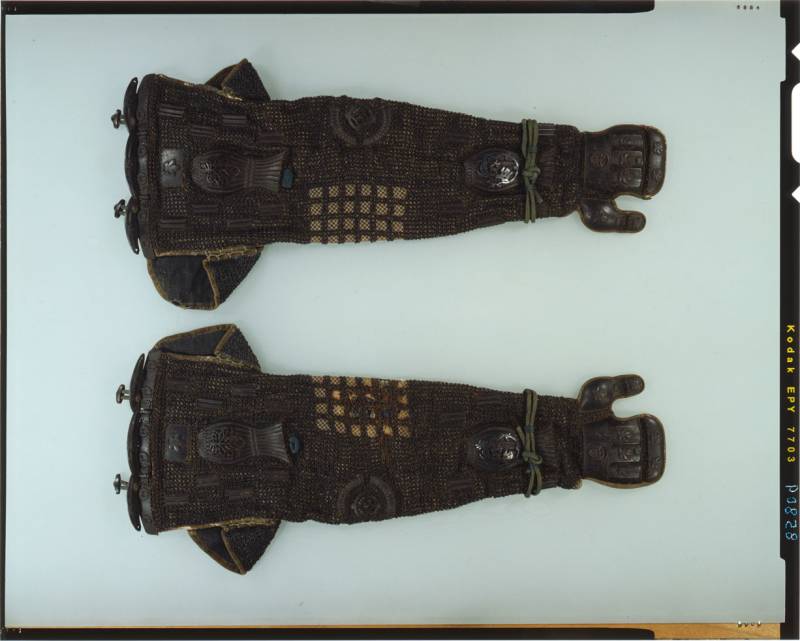
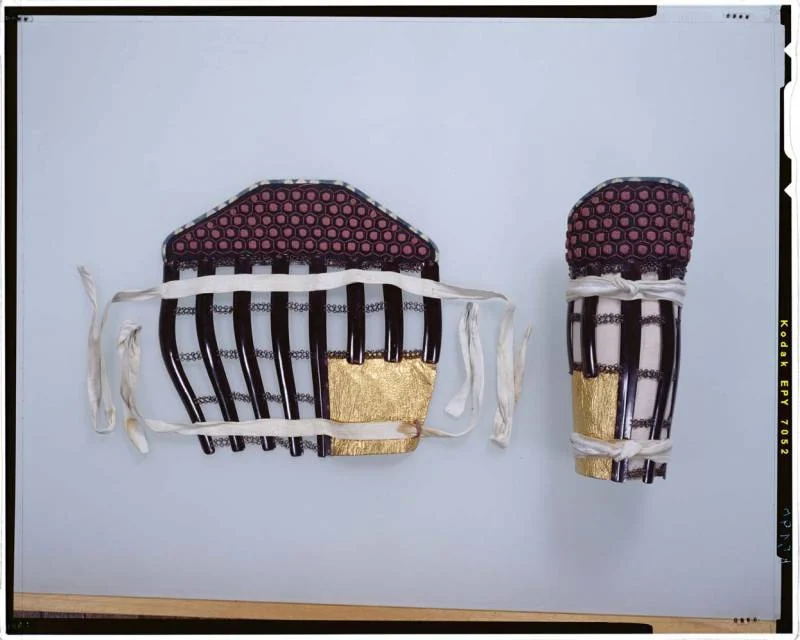
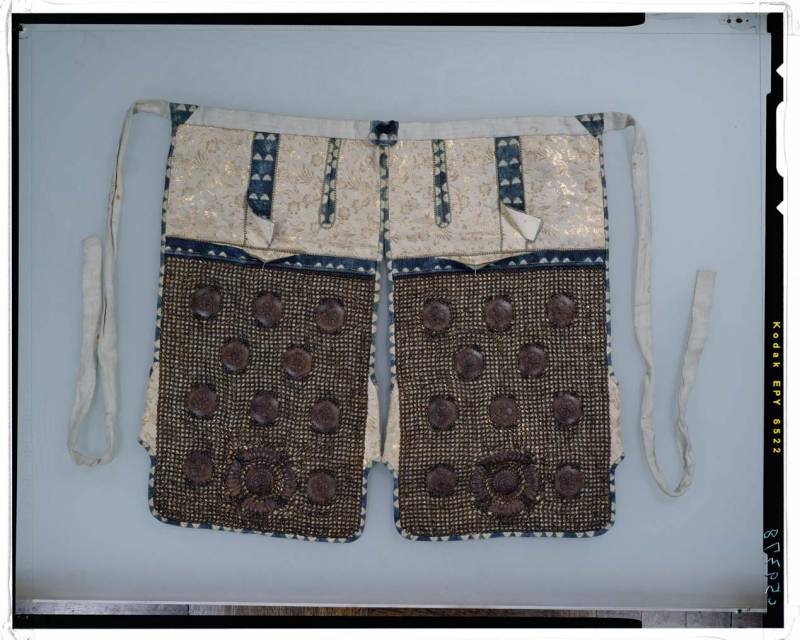
Information